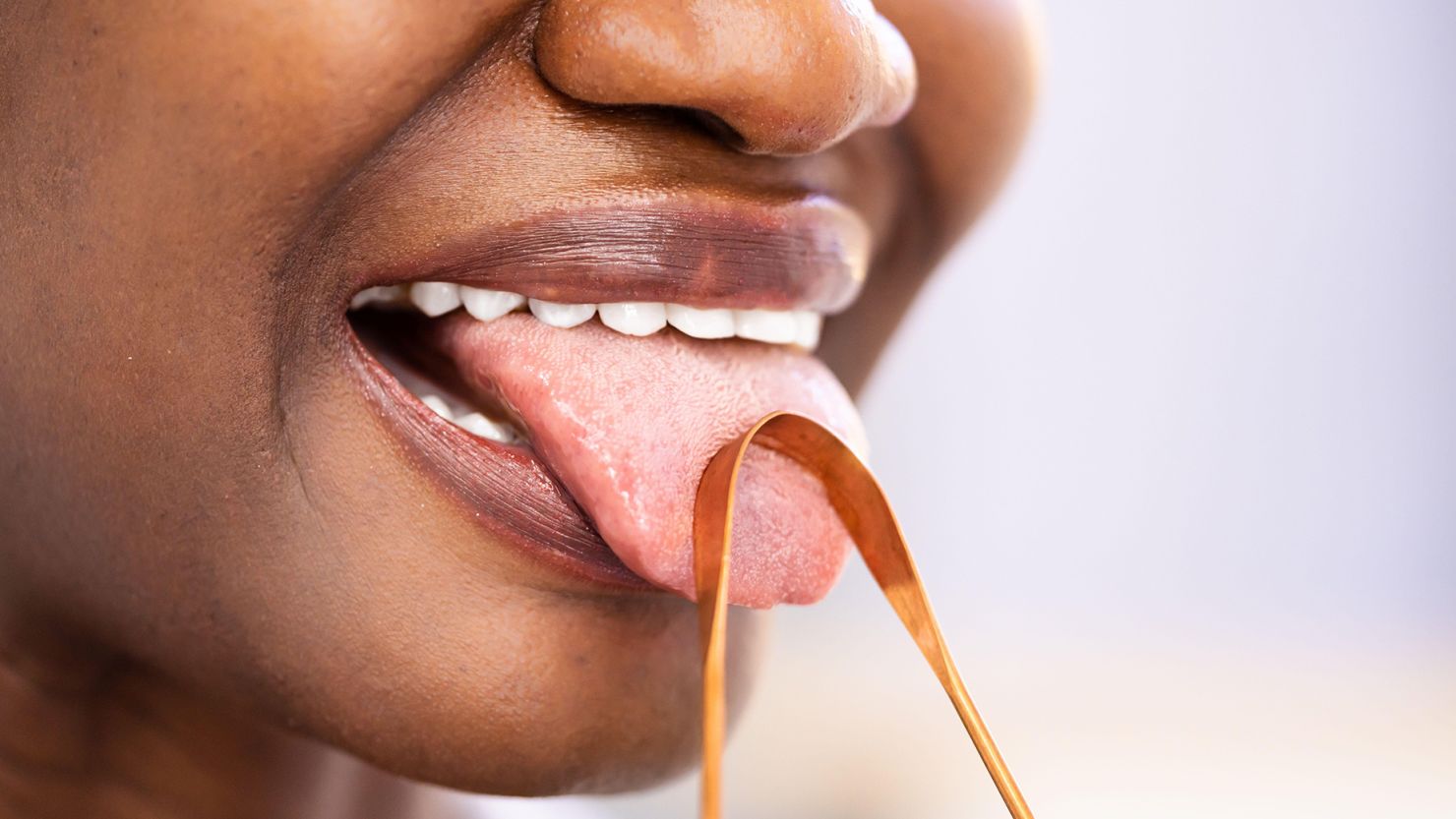Editor’s note: Jocelyn Solis-Moreira is a New York-based freelance health and science journalist.
If you can’t seem to get the taste of onion, garlic or cheese out your mouth after brushing, you might benefit from a tongue scraper.
As one of the most flexible muscles in the body, the tongue has several jobs. It helps with speech and actively moves food around to make it easier to taste, chew and swallow. But opening your mouth invites bacteria to enter, and over time, these germs clump together to form colonies living on top of your tongue.
Everyone has tongue bacteria — some are good, but most are bad. Tongue scrapers are an effective way to get rid of these germs, if done correctly.
What is a tongue scraper?
Tongue scrapers are metal or plastic devices used to clean the surface of the tongue. They’re like combs for the tongue, said Dr. Michael Kosdon, a cosmetic dentist at Smiles of NYC in Manhattan.
The tool strips off that white film containing a buildup of bacteria, food particles and dead cells trapped between the crevices of the tongue’s taste buds. This includes the sulfur-causing bacteria that cause bad breath.
Tongue scraping can help when “you have a lot of bacteria and film on your tongue,” Kosdon said. “By scraping it off, you can actually taste things better because germs are covering where the taste buds are situated.”
Are tongue scrapers medically proven to work?
A few medical studies support the use of tongue scraping for getting rid of tongue bacteria and bad breath, but the studies were mostly small and didn’t show strong results. The few clinical trials available found a slightly greater benefit in using tongue scrapers for tongue cleaning than toothbrushing, but these effects were temporary.
With the lack of strong evidence, the American Dental Association does not currently endorse tongue scrapers. But there’s no harm in trying it if you’re interested — just as long as people prioritize the other recommendations of brushing teeth for two minutes with a fluoride toothpaste, flossing and visiting your dentist regularly, said Dr. Alice Boghosian, the consumer adviser spokesperson for the American Dental Association.
“Personally, I scrape my tongue at night before I go to sleep and in the morning after I floss and brush,” Boghosian said. “It makes me feel like I have a cleaner mouth.”
How to use a tongue scraper
You can use a tongue scraper like you use a razor, Kosdon said.
Go up and down the tongue three to five times to remove the bacteria, adding just a bit of pressure when tongue scraping. Consider starting in the middle rather than trying to stick the tongue scraper all the way to the back of the tongue. The farther back you go, the higher the risk of initiating the gag reflex.
Don’t push down too harshly or you could cause microscopic cuts to the little bumps on your tongue called papillae. These small nubs house your taste buds, and by nicking them, you can cause inflammation and irritation when eating acidic and spicy foods.
“It’s a trial-and-error process,” Boghosian said. “Try it lightly and see how much plaque you’re getting off without cutting yourself.”
If you’re not using a disposable one-use tongue scraper, you’ll want to rinse after each use with soap and water. Kosdon advised soaking the tongue scraper in a cup of water mixed with hydrogen peroxide for a few minutes to disinfect it thoroughly.
How often should you use a tongue scraper?
There are no official guidelines on how often you should use a tongue scraper. As long as people go through the checklist of brushing their teeth twice a day and flossing, Boghosian said people can use a tongue scraper whenever they feel like they need a deeper scrub.
If you are trying to add more tongue scraping in your oral hygiene routine, Kosdon recommended doing it at least twice a day. “It’s probably a good thing for everybody to do in their hygiene routine. It can’t hurt to try if done properly.”







